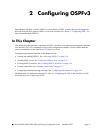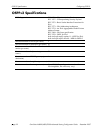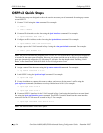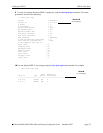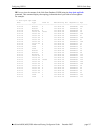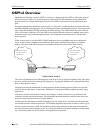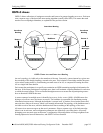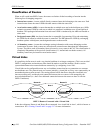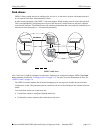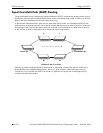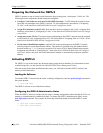
OSPFv3 Overview Configuring OSPFv3
page 2-8 OmniSwitch 6800/6850/9000 Advanced Routing Configuration Guide December 2007
OSPFv3 Overview
Open Shortest Path First version 3 (OSPFv3) routing is a shortest path first (SPF), or link-state, protocol
for IPv6 networks. OSPFv3 is an interior gateway protocol (IGP) that distributes routing information
between routers in a Single Autonomous System (AS). OSPFv3 chooses the least-cost path as the best
path.
Each participating router distributes its local state (i.e., the router’s usable interfaces, local networks, and
reachable neighbors) throughout the AS by flooding Link-State Advertisements (LSAs). Each router main-
tains a link-state database (LSDB) describing the entire topology. The LSDB is built from the collected
LSAs of all routers within the AS. Each multi-access network that has at least two attached routers has a
designated router and a backup designated router. The designated router floods an LSA for the multi-
access network.
When a router starts, it uses the OSPFv3 Hello Protocol to discover neighbors and elect a designated
router for the network. Neighbors are dynamically detected by sending Hello packets to a multicast
address. The router sends Hello packets to its neighbors and in turn receives their Hello packets.
OSPFv3 Hello Protocol
The router will attempt to form full adjacencies with all of its newly acquired neighbors. Only some pairs,
however, will be successful in forming full adjacencies. Topological databases are synchronized between
pairs of fully adjacent routers.
Adjacencies control the distribution of routing protocol packets. Routing protocol packets are sent and
received only on adjacencies. In particular, distribution of topological database updates proceeds along
adjacencies.
Link state is also advertised when a router’s state changes. A router’s adjacencies are reflected in the
contents of its link state advertisements. This relationship between adjacencies and link state allows the
protocol to detect downed routers in a timely fashion.
AS link state advertisements are flooded throughout the AS, across areas. Area link state advertisements
are flooded to routers within the same area. The flooding algorithm ensures that all routers within a given
area have exactly the same LSDB. This database consists of the collection of link state advertisements
received from each router belonging to the area. From this database each router calculates a shortest-path
tree. This shortest-path tree in turn yields a routing table for the protocol.
Hello. Please respond...
Are you a neighbor...
Hello. Please respond...
Are you a neighbor...
My link state is...
My link state is...




